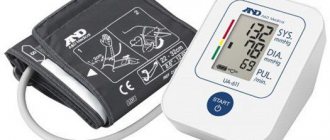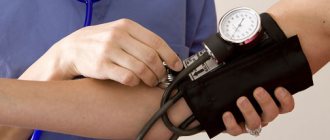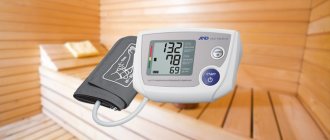Many people suffering from high blood pressure are sure that running is contraindicated for them, as is doing any other sport. However, doctors deny this: playing sports, including running, helps a person cope with the disease.
Sergei Berdnikov, a cardiologist and specialist in echocardiography and functional diagnostics at the European Medical Center, helped us figure out how to run without harming ourselves.
There is a statement that if a person constantly moves during the day, walks 5-6 km to do household chores, takes children or grandchildren to kindergartens and schools, then this load is absolutely enough for health. Unfortunately, this is the most common misconception.
Only periodic maintenance of a high pulse, achieved during sports activities, can improve the elasticity of the arteries, reduce the “stiffness” of the heart muscle, and reduce peripheral insulin resistance. Insulin resistance is a metabolic disorder in which the concentration of glucose in the blood increases and a number of diseases flourish, problems with blood vessels and excess weight appear.
From the standpoint of evidence-based medicine, regular running is an effective tool for reducing and normalizing blood pressure and preventing diabetes.
Is it possible to run with high blood pressure?
It is possible and even necessary. Regular aerobic exercise has a beneficial effect on the course of arterial hypertension and reduces the risk of cardiovascular diseases.
The validity of this statement is confirmed by many studies. One of them belongs to Harvard University doctor Ralph Paffenbarger. The study included 17,000 men with similar demographic characteristics. It was found that those who lost less than 500 kcal per week during exercise had the highest mortality rate. Those who lost 500 to 1,000 calories per week during exercise had a 22% lower mortality rate.
The results of those who lost up to 3,500 kcal per week were even more impressive. Their mortality rate was 54% lower. In this case, intensive training included running, swimming, handball, cycling, and skiing.
marathon and half marathon training plans and start training today! -30% with promo code PLAN2020 all December!
Physical activity is absolutely necessary for people with high blood pressure, but it is important not to overdo it. Activity should not lead to excessive strain on the body's resources. Abuse of training leads to the opposite result - general health worsens, systolic-diastolic blood pressure increases, and arrhythmogenic potential increases.
This statement is perfectly illustrated by another study from Harvard University, which compared the life expectancy of elite athletes, average athletes and those who did not play sports at all. It turned out that it is the untitled athletes who live longer.
Consequences of abruptly quitting alcohol
A person who has abruptly given up alcohol is going through a difficult period. At this time, psychological processes intensify: mental anguish, shame are felt, a feeling of inferiority and self-doubt appears.
Changes also occur on the physical level. A person feels real withdrawal, an obsessive desire to drink. Against this background, weight is often lost, insomnia, headaches, and increased irritability appear. It is important to endure such phenomena, not to break down - they gradually pass within a week.
Note! Having decided to suddenly give up alcohol, it is important to carefully monitor yourself. During this period, there is a high risk of unknowingly becoming addicted to another bad habit: smoking, overeating, etc. Another danger is “lowering the degree”, when the addict chooses “weaker” drinks: beer, energy drinks, low-alcohol cocktails. This will not help solve the problem of alcoholism - addiction will take its toll with this approach.
You need to be prepared for the following symptoms to appear gradually or simultaneously:
- Shortness of breath, heaviness in the chest
- Strong feeling of hunger
- Apathy or increased excitability, irritability, development of anxiety and depression
- Psychological exacerbations: desire to drink, feelings of hatred or self-pity, anger at others
- Daytime drowsiness, nighttime insomnia
alcohol withdrawal differently , and individual symptoms may appear. The main thing is not to give in to the obsessive desire to drink.
What happens to blood pressure while running?
Exercise can increase blood pressure, but the effect is usually temporary - blood pressure should gradually return to normal after exercise.
According to Centers for Disease Control and Prevention guidelines, a blood pressure of less than 120/80 mmHg is considered normal. These are systolic pressure (first number) and diastolic pressure (second number). Systolic blood pressure is a measure of the pressure in the blood vessels when the heart beats. Physical exercise increases it.
Diastolic blood pressure is a measure of the pressure in blood vessels between heartbeats. It should not change significantly during training. If it changes, consult your doctor.
It is difficult to say definitively what is considered healthy blood pressure after exercise, since blood pressure varies from case to case. A normal level for one person may be a sign of a problem for another.
However, in general, high blood pressure after a rest period of up to two hours after exercise includes any value above 140/90 mmHg, and low blood pressure after exercise includes any value below 90/60 mmHg.
Causes of increased pressure
Pressure is a physical characteristic that shows the functioning of different body systems. First, let's figure out why such a disease as hypertension occurs.
Stroke volume
First, stroke volume (SV)—the amount of blood that fills the vessels in one heartbeat—may increase. Here the systolic pressure (top number) increases.
There are 2 main reasons for increased SV : heart + amount of fluid.
Heart
The functioning of the heart muscle is disrupted: the rhythm is disrupted, the wall hypertrophies, contractility decreases due to a previous heart attack.
Liquid quantity
Fluid excretion is impaired due to consumption of large amounts of salt, kidney problems, and thyroid diseases.
Vessels
Atherosclerotic plaques reduce the elasticity of blood vessels.
The main cause of atherosclerosis is increased cholesterol intake.
In addition, blood vessels can narrow due to poor kidney function and the release of stress hormones. Any metabolic disorder is the cause of pressure destabilization.
All these factors more often lead to an increase in systolic + diastolic pressure (upper + lower).
How to start running with hypertension
The following tips will be useful to people who know for sure that they have high blood pressure, but decide to go jogging.
People suffering from hypertension who have not previously exercised should understand that they need to start small. The duration of the first lesson is no more than 10-15 minutes.
People with hypertension probably already have a tonometer at home - a device for measuring blood pressure. If not, it’s worth buying one, because it’s important to measure your blood pressure before running. It is generally accepted that blood pressure is above 160/100 mmHg. at rest is a contraindication for starting training.
To make your workouts not only safe, but also effective, you should also invest in a sports watch and a chest-mounted heart rate monitor to monitor your heart rate. They will help you train in safe heart rate zones and collect the necessary information about your training.
Before starting training, it is optimal to undergo testing on a treadmill with gas analysis and lactate determination - treadmill test. It allows you to individually calculate pulse zones and helps identify patients with coronary heart disease or heart failure for whom planned exercise may be contraindicated.
The benefits of moderate running
Any treatment method is aimed at improving the patient's condition. It's the same with running. One-time irregular jogging does not stabilize the condition of a patient with hypertension. Only systematic exercises on a set schedule can help.
- strengthening the walls of blood vessels;
- delivery of oxygenated blood to muscles and tissues;
- increasing the lumen of blood vessels;
- Reduced resistance of the walls of blood vessels (they become more elastic, pressure decreases).
All this prevents hypertensive crises. Regular jogging may reduce the amount of medication you take. It happens that a person with hypertension begins to cope without pills (in the initial stage of the disease).
To enhance the therapeutic effect, it is recommended to supplement running with Nordic walking and hiking. Sports activities should be diversified by swimming.
The group often includes people with hypertension. Communication distracts from problems and helps improve mental state.
Rules for running for hypertension and permissible loads
- During initial training - the first 2-3 weeks - you should stick to jogging, that is, running at a slow pace at a low heart rate.
- Training begins with a slight warm-up of the body muscles. This is not stretching, but dynamic light gymnastics. You can do squats, bends back and forth, and circular movements.
- It is also important not to start the jog itself right from the entrance. It is recommended to walk briskly, then do a warm-up, and then start jogging.
- After 2-3 weeks of regular training, it is permissible to increase the pace and duration of running. Over time, you can increase your running time to the optimum - this is 40-60 minutes per workout.
- The number of workouts per week varies and depends on concomitant diseases and general physical fitness. It is unlikely that two workouts a week will be effective; it is advisable to train 3-5 times. Even if you can’t devote enough time to training, then 10-15 minutes of activity is preferable to no activity. And here it doesn’t matter what it will be - ellipse, bicycle, running or strength training with your own weight.
- Remember that running always increases your appetite. But eat after your workout because running right after eating is not recommended. If you are very hungry, you can eat some fruit or drink tea with sugar to avoid stomach discomfort.
Read on topic: Running on an empty stomach
The actual question is: is running beneficial?
The benefits of running are difficult to overestimate.
It is considered the best pacemaker. It has practically no contraindications, the main thing is to determine the pace correctly: jogging is considered the most popular type of running. An excellent method to lose weight, normalize blood circulation, and stay in good shape. The technique of this type of running is simple: speed 7–8 kilometers per hour, small steps, body straightened, preferably to breathe through the nose. Regularity will give good results. Main advantages: minimal stress on joints, strengthening leg muscles, improving the functioning of the cardiovascular system. Avoid strenuous movements and do a warm-up
Having chronic diseases, it is important to consult a doctor before starting. “Sprint” running involves quickly covering short distances. Great for reducing weight and tightening your figure. “interval” is used by experienced athletes who know the capabilities of their body.
Jogging is considered the most popular form of running.
According to doctors, the cardiovascular system is the first to receive a boost of health from running. There are several reasons explaining its positive effect:
- oscillatory movements evenly distribute body fluid (blood, lymph);
- rapid breathing strengthens the diaphragm, massages the internal organs, improving blood circulation in them;
- during movement, natural training of the leg muscles is performed, which prevents blood stagnation in the vessels;
- blood flow is normalized.
Indicators vary from 30 to 80 units of mercury. Art. (usually rises). However, there is no standard; it is individual for each person, usually associated with age, individual characteristics of the body, weight, lifestyle, and occupation.
Sprint running involves quickly covering short distances.
How to run correctly:
- First, lightly land the toe, foot, and then the heel.
- Easy, no stomping.
- The body is relaxed, only the abdominal muscles are tense.
- Look ahead.
It is advisable to allocate mandatory time in your schedule for jogging, otherwise postponements and postponements are inevitable.
A morning jog restores hormonal balance, while an evening jog relieves stress after a hard day. For training you do not need special equipment, just sneakers and comfortable clothes. Before and after classes, be sure to do a warm-up and let your muscles relax. You can exercise on a treadmill (in the gym) or outdoors. The treadmill has its advantages; it is not dependent on weather conditions. There are disadvantages - the monotony of running, a stable picture, artificial lighting can negatively affect the psychological state. For beginners, the optimal season is spring and summer.
Running will give results only with regular training, as well as with adequate distribution of forces.
Running is undesirable for some diseases, such as:
- heart disease;
- arrhythmia;
- thrombophlebitis of the extremities;
- mitral stenosis;
Exacerbation of high blood pressure and other chronic diseases is also a contraindication for jogging. If you have a cold or runny nose, you should stop running until you have fully recovered. The inability to breathe properly will negatively affect blood circulation and the cardiovascular system. Because running has a significant number of positive benefits, it is often used as a treatment. Therefore, you should talk to your doctor about contraindications. Sometimes running is allowed even with quite serious illnesses, but with moderately severe symptoms.
What else is important to know if you are just starting to run?
Before you start training, it is important to choose the right running shoes. Unfortunately, modern city residents are accustomed to very comfortable shoes that weaken the muscles of the feet, and many develop flat feet of varying severity.
For normal pronation, shoes will fit without any adjustments. If there are deviations from the norm, a correction is necessary to bring your pronation closer to normal. For this purpose, special compensating sole mechanisms are created. Their task is to protect the runner from injuries, unnecessary overexertion and make running more comfortable. Neglecting the choice of shoes and running technique leads to inflammation of the Achilles tendon, plantar fasciitis and a forced long break from sports activity.
You also need to purchase special clothing. It should be light and not hinder movement, protect from bad weather. If you have hypertension, avoid wearing overly warm clothes to avoid overheating. Thick sweaters and lined pants will make you uncomfortable during training, and overheating can lead to dehydration and cause blood pressure instability both during and after exercise.
If you are planning to take up running, we recommend reading this great guide for beginners: How to start running and not quit. In it we talk about the specifics of training, choosing clothes and shoes, nutrition, breathing and other nuances that will help you get the most benefit from running.
What not to eat if you have prostatitis
Patients often ask why acute treatment for prostatitis is not allowed or whether there are other prohibitions. Since the male gland is closely connected with the urinary or gastrointestinal tract, a number of dietary restrictions are expected. The diet for illness must be based on a reasonable balance of proteins, fats and carbohydrates. Fiber, vitamins and minerals should be present in sufficient quantities.
- During periods of exacerbation, doctors recommend refraining from foods that promote gas formation: cabbage, legumes, radishes.
- You should limit your intake of foods that contribute to the development of constipation. This includes fatty meats, fried foods, smoked foods, dried fish, baked goods, white flour products, and mayonnaise.
- Excess salt and acid content in food can have an irritating effect on the genitourinary system. To reduce the load on the kidneys, during the treatment of prostatitis, the use of pickles, marinades, vinegar, spices, and hot seasonings is prohibited. Avoid drinking strong tea and coffee.
How long does it take for alcohol to leave the body?
First day. You feel a strong hangover, nausea, vomiting, and a sharp increase and decrease in blood pressure begin. The addict suffers from headaches and dizziness. The most important thing is not to drink alcohol. Second day. There is a desire to eat sweet foods. This is due to the fact that ethanol added strength and energy, but now the body lacks this. The body intensively produces insulin, the liver removes toxins. The third day. The headache is still present, but it becomes much easier to bear. Other symptoms that appeared on the first day weaken or disappear completely. Seven days later. If a person lasts a week without alcohol, the body completely removes waste, toxins and other waste products. Slight weakness, dizziness, and drowsiness remain. Complete elimination of ethanol from the body is completed 4-5 weeks after quitting it. During this period, the condition of the skin, nails and hair improves, internal organs and systems are cleansed, the central nervous system and normal brain function are restored. After a month, your sleep and diet will improve, and your metabolism will normalize.
Benefits of a sober lifestyle
It is impossible to describe all the advantages of a sober lifestyle . When the mind is not intoxicated by alcohol, clarity of thinking, efficiency, ability to make the right decisions, and analyze the situation are preserved. The main advantages of a healthy lifestyle:
- No more hangovers. Every morning begins with plans and the desire to live, and not with hellish headaches and the urge to hangover.
- Nice appearance. It is much more pleasant to observe the reflection of a healthy person in the mirror than to meet the blurred gaze of reddened eyes.
- Vigor and efficiency. The ability to think logically, draw conclusions, solve problems, and integrate into the rhythm of life helps maintain self-esteem and maintain normal brain function.
- Excellent memory. Now the chances of losing your wallet are much less. At least the person remembers where he could have left it.
- Adequate condition. When sober, a person controls his emotions and calculates his strength. Drunk people lack a sense of fear, which leads to domestic tragedies, road accidents and other consequences.
The most important advantage is establishing relationships with loved ones, friends, and colleagues. The person again becomes a full-fledged member of society, loved by his family and respected by his colleagues.
Ethanol methodically destroys the body, destroys family and friendly ties, moral principles, the ability to think and analyze. Giving up it will help you regain your health and position in society, feel the joy of critical thinking and look at the world soberly.











